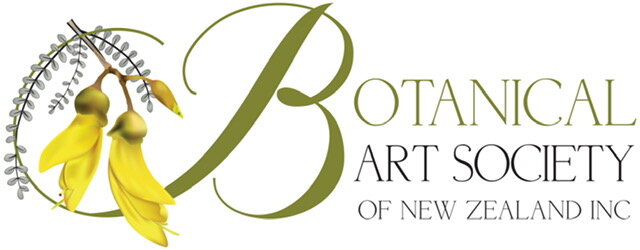Our Story
All cultures have sought to make sense of their environment through the artistic representation of the plants and animals around them. Botanical art has a long established history in New Zealand. Maori first reflectected their deep knowledge of plants through the arts of woven cloaks, kete and panels, carving and rongoa (traditional medicine).
European influenced botanical art dates as far back as the first visit of botanists Joseph Banks and Daniel Solander who travelled with Captain Cook 250 years ago.
Our History
The Botanical Art Society of New Zealand (BASNZ) was founded in April 2004 by a dedicated group in Christchurch in 2004 as a non-profit organisation. The aims were to foster and promote botanical art and to stimulate interest in plants, conservation and the natural environment.
Originally members met each week at the Girl Guide Centre and when numbers increased they moved to the Bathhouse in the grounds of Mona Vale Homestead and later again to Avice Hill Art and Craft Centre where the Christchurch group still meet today.
Avice Hill Art and Craft Centre
First meeting held at Avice Hill
Front row left to right: Jo Donaldson, Jacquie Carran
Back row from left to right: Tina Grey, Margaret Taylor, Karen Atherton, Jo Ogier, Suzy Abbott, Elizabeth Yuill Proctor
It was at Mona Vale where the idea for the Canterbury Plains Florilegium was hatched to coincide with the 150th anniversary of the Christchurch Botanical Garden in 2013. Riccarton Bush as well as the Botanical Gardens were used as a base for the plants and it took nearly three seasons to complete the works. Once completed they were hung in the new information centre in the Christchurch Botanic Gardens, after which it toured the South Island, with great success.
Florilegium catalogue
Our thriving society has won group medals such as Silver at the ‘Ellerslie Flower Show’ and individual members have won medals at the RHS Botanical Art Show in the UK and contributed to ‘The Highgrove Florilegium’ sponsored by the Prince of Wales Trust.
Nearer home, members have been winners of ‘Margaret Stoddard Awards’ and the Botanical Society of Otago’s ‘Audrey Eagles Competition’ among others.
A few of our members have undertaken distance learning courses such as those run by the Society of Botanical Artists and the Royal Botanical Gardens in Edinburgh in the UK. Others have undertaken other courses while overseas.
Lesley Alexander receiving her SBA Diploma certificate in London from Simon Williams, Director of the course.
We have tutors, some from overseas, on a regular basis to take workshops which are very popular. Unfortunately due to Covid 19 those overseas invitations were put on hold but we look forward to collaborating with them in the future.
Workshops with Jenny Phillips 2013 (top) and Vincent Jeannerott 2015 (bottom)
Going Forward
Over the past few years there has been a resurgence of interest in botanical art and the very successful ‘Botanical Art Worldwide’ exhibition held in Auckland, before travelling to Wellington and Bleheim in 2018, proved that New Zealand has many talented botanical artists. We are already working towards the next Botanical Art Worldwide exhibition in 2025.
Although ‘business as usual’ was interrupted by the Covid 19 pandemic, BASNZ has been working on ways to achieve our aims online, including regular member’s Social evenings, workshops by and for our members. We are encouraged by the boom in online instruction by prominent artists which permits New Zealand artists to access the best the world has to offer without leaving our painting desks.
BASNZ publishes a quarterly online newsletter featuring member profiles, botanical news and events, book reviews and details of national and international exhibitions, courses, workshops and field trips.
Individual artists run botanical art courses and workshops for beginners to professionals throughout the year, and annual society exhibitions, alternating between the North and South Islands showcase members’ most recent work.
Today we have society members in all corners of New Zealand. They are documenting all types of flora – native and exotic, large and small, the well- loved as well as those generally overlooked, bringing them to the public’s attention through annual exhibitions.
Plans are in the works to grow the membership of the society and thus increase public awareness of this exacting art genre. Many areas have a local representative, the ‘go to’ person, encouraging and fostering connections with local gardens and institutions, link artists with each other and encourage and support others to take up this beautiful art.






